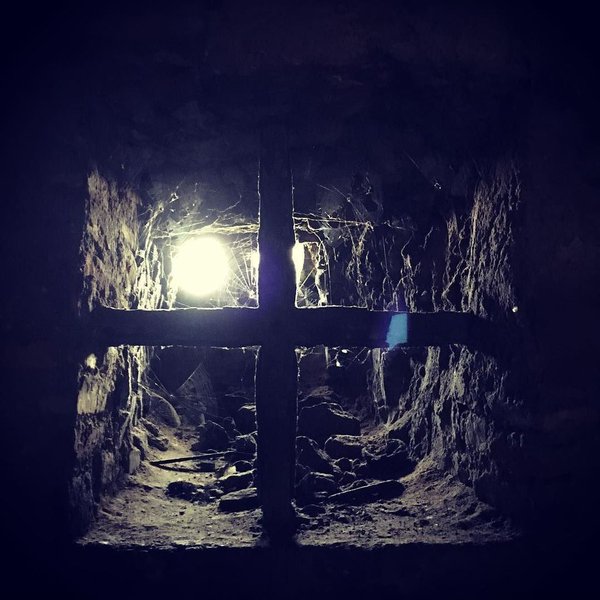Mary Magdalene: Peering into the darkness

One of the things I like about Mary Magdalene is her willingness to look into the darkness—whether it be her own demons or the darkness of the empty tomb.
Next we hear her frustration, speaking in somewhat of an irritated tone, with the one she supposes to be the gardener: “Sir, if you have carried him away, tell me where you have laid him, and I will take him away!”
(As in, how many idiots do I have to talk to here? Just tell me where you’ve put him and I’ll take care of it!)
And then, when she realizes that Jesus is, in fact, standing in front of her–that he has returned from the dead and has not abandoned her to the powers of darkness–we hear her pure joy: “Rabbouni!”
Whatever turmoil she may have been feeling, it did not hold her back from entering into the darkness to find answers. Others were too scared to come. Peter did not see anything and went home. Yes, she was grief-stricken. Yes, her stomach was most likely upended. Yes, the darkness threatened to surround and engulf her.
But she went ahead anyway. Perhaps what gave her the strength to move ahead was the knowledge that she had already faced much so darkness within herself–and would not leave unfinished the relationship with the One who had healed her. She was loyal to Jesus in a way the others weren’t: she would see things through.
In the first century, emotional and physical maladies were seen as demons. We don’t know the details. Depression, anxiety, schizophrenia, leprosy, epilepsy, eating disorders…there could have been a combination of many things. Certainly her distress would have been overpowering, her isolation unbearable. Certainly she had indeed known solitary confinement within her soul.
What mattered was that Jesus healed her. Her long sentence of turmoil-filled heartbreak was ended. For the first time in many years, she was a free, fully integrated person—with a new group of people to love and a reason to live: Jesus. No wonder she was so loyal to him.
And perhaps that’s why he loved her as well. She was strong, rugged, loyal. She was not like a dandelion in the wind, easily puffed away. Because she had looked at her demons and been healed, both her soul and feet were strongly rooted. For those who remember the Velveteen Rabbit, Mary Magdalene was an exceptionally strong such rabbit.
I do not believe it’s a stretch to say that Jesus depended on her. He expected to see her at the tomb; he knew that she would be there, even if only to say a final goodbye. He must have been within earshot when Peter looked in the tomb, but he chose to make himself known first to Mary Magdalene, the outcast.
She showed up. She was there for him—and he for her.
The light shines in the darkness, and the darkness has not overcome it.
______
Scott Gunn Photo, Female slave dungeon at Cape Coast Castle, Ghana.

